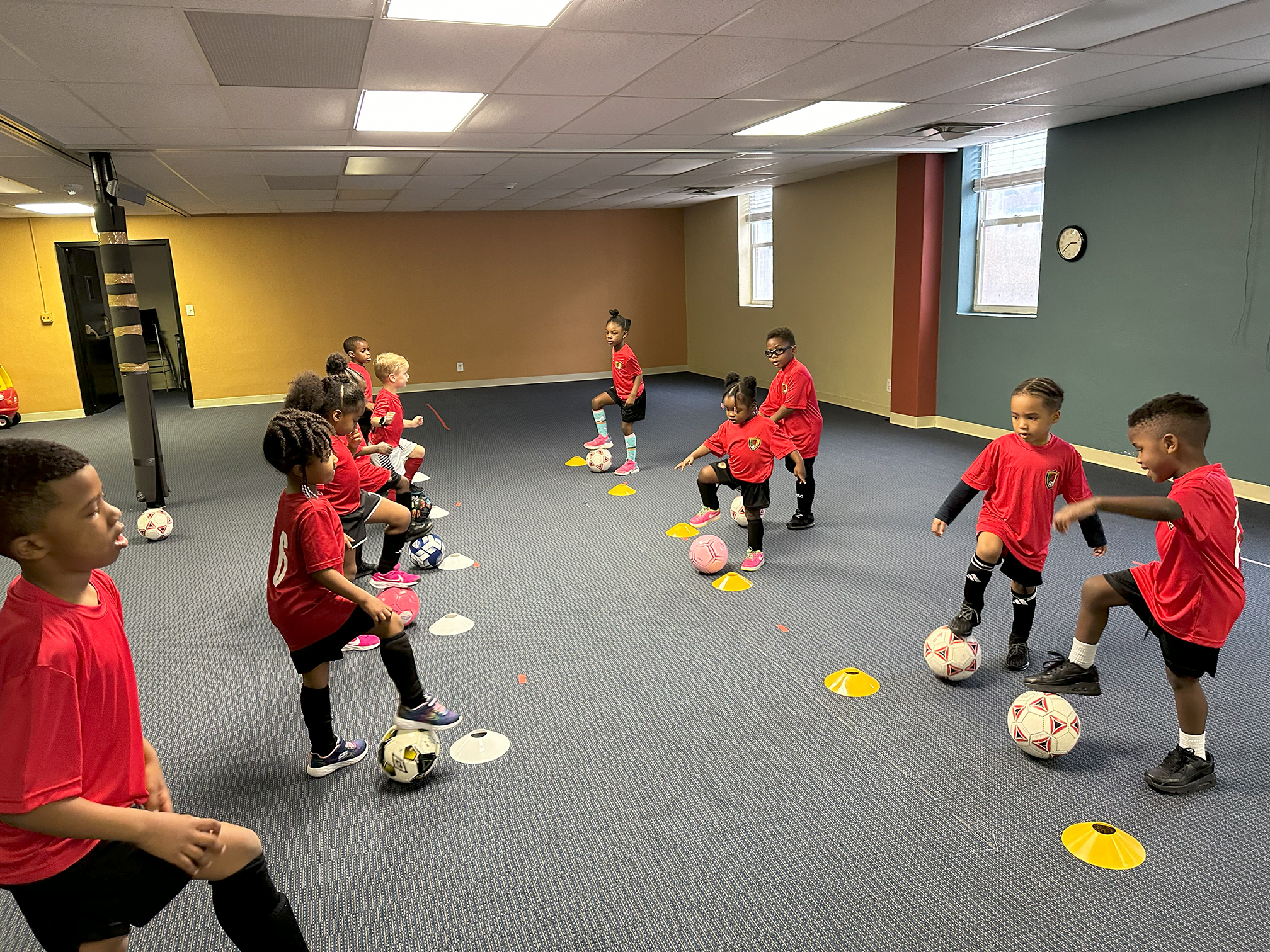
Soccer is an excellent way to develop coordination in children from an early age. Coordination is a key element that enhances a child’s performance on the soccer field and benefits their overall physical development. Here’s how soccer helps kids aged 3-13 improve their coordination and how you, as a parent, can support them in this journey.
Developing Motor Skills Early On
For younger children, ages 3-5, soccer introduces basic movements like running, kicking, and balancing. These activities help develop gross motor skills, which are the foundation of coordination. Playing soccer also promotes better hand-eye and foot-eye coordination, as kids learn to control and kick the ball while moving around the field.
- Fun Drills: Encourage playful exercises like dribbling around cones or kicking the ball at simple targets. These will enhance their ability to focus on controlling the ball while staying balanced.
For younger children, ages 3-5, soccer introduces basic movements like running, kicking, and balancing.
Coordination Improves with Age
As children get older (6-9 years), their ability to control both their bodies and the ball will naturally improve with more practice. At this stage, kids learn to dribble, pass, and shoot the ball more accurately, requiring a blend of fine and gross motor skills. Soccer drills that focus on footwork, agility, and reaction time help refine their coordination.
- Agility Drills: Introduce drills that involve quick changes of direction, such as side-stepping through cones or practicing short sprints with ball control. These activities help improve reflexes and teach kids to remain coordinated under pressure.
Advanced Coordination for Older Kids
For players aged 10-13, coordination becomes more sophisticated as soccer skills become more complex. At this stage, they’ll start focusing on controlling the ball while engaging in tactical gameplay. Multi-tasking—thinking about strategy while handling the ball—helps fine-tune their overall coordination and prepares them for competitive games.
- Incorporating Strategy: Use drills that involve making decisions quickly, such as passing in tight spaces or practicing defensive moves while controlling the ball. This enhances their ability to coordinate body movements in a fast-paced game setting.
Soccer offers children a natural, fun way to improve their physical coordination. The key is to ensure they enjoy the game, and as their skills improve, so will their confidence and physical capabilities!